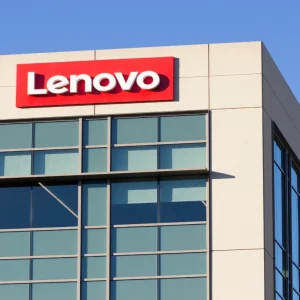
The IoT is gathering pace and, according to Matt Hatton, CEO at analyst firm Machina Research, this is only set to accelerate at a speed of 18% CAGR until 2024. By then, the company predicts 27 billion devices with some sort of internet connection, up from five billion in 2014.
"Growth will be rapid. 69% of connections by 2024 will be of short range [with technologies such as PLC, Wi-Fi and Zigbee)," Hatton said.
"Connected living and working, which includes smart home, building automation, etc, will dominate 83% of the market."
CBR lists the top ten trends driving the IoT market towards that 83% market share.
1. IoT is fundamentally changing the business of companies
At the IoT Tech Expo, Hatton said that depending on the use case, motivations to adopt IoT technology will diverge on a use case basis.
Companies will be looking at different aspects of IoT to achieve specific motivations, with the main one being regulations.
.
This is followed by efficiency gains and then by the addition of new features to the service and/or product. "It starts to evolve into adding features to existing products…and gradually we will see the emergence of new business models."
According to Hatton, we are already moving from smart products, to connected products and the next step is to combine IT with operations technologies (OT).
He said: "This is leading to servitisation, which gives a competitive advantage."
2. Established IoT-based organisations are here, but mass-adoption is still faraway
The IoT appears to be crossing that chasm from early adopters to more established organisations, according to Hatton.
"[However], we do not expect a lot of companies to rush out in the next two years and adopt IoT. They will continue to test the waters. It will be another few years until mass adoption happens."
3. Chief IoT Offcier – CIoTO
The CIoTO is a controversial role, dividing the industry between those who question the addition of another C-level role, and those who see the need of getting someone 100% focused on IoT and M2M at board level.
Yet, according to Machina Research, in the next few months the Chief IoT Officer will become an official role for at least at one of the Fortune 500 companies.
As the IoT provides the competitive differentiators of the 21st century, the specifics of the job will vary from company to company. "However, in most cases to take advantage requires a fundamental transformation in how the company does business."
5. Low-power wide-area networks promise a lot
Nearly all technology vendors, service providers and even organisations with a grasp on IoT have been looking into LPWA networks.
"We have a group of technologies with similar characteristics that are already available for IoT," said Hatton. Some of these include Sigfox, LoRa, Amber Wireless, Coronis, NWave.
By 2023, Machina Research predicts over three billion LPWA M2M connections will be deployed, outpacing those of a cellular nature.
6. 2G/3G switch-off set to accelerate
The move towards more resilient and faster connections will dictate the end of 2G and 3G as the world moves to 4G, with 5G already on the horizon.
Hatton said: "In the cellular world with regard to wide area connectivity, there is a lot of 2G/3G switch-off which will create challenges.
"It creates problems for companies deploying cellular baser IoT solutions. If you think about deploying IoT, use cellular wide area connectivity [to future-proof]."
7. We have evolved from M2M to IoT
There is no definitive difference between M2M and the IoT as there is no specification in what defines both terms, according to Hatton.
"The key is that when we think about M2M, we think about a connected device to extract data for a specific purpose; when you think about IoT it is more about what you do with that data when you have it, integrate with other sets of data that you have, and so on.
"This creates some challenges. Data associated with M2M has meaning in its own right."
8. Security
No one doubts that security, together with privacy, liability and trust, is set to suffer from ever more sophisticated attacks. However, Machina Research sees a trend where it will become less threatening.
"There will be more leaks, more idiocy such as hard coding default passwords, and more data breaches, and more hacking. Nevertheless, there will be a realisation that not all potential security problems need to be solved now."
9. The Subnets of Things – SoT
So far, the industry has very much been focused on M2M and IoT and all other sorts of connections. Yet, the subnets of things (SoT) is another acronym that will soon be trending across industries.
This SoT consists of integrated ‘islands’ of connected devices, emerging within data communities. It would typically be driven either by a single point of control, single point of data aggregation, or potentially a common cause or technology standard.
"The merging of companies that will help to handle with the data from those subnets of things is also emerging as trend," Hatton said.
10. Analytics will become a dimensional challenge
The growing rate at which data is being generated is only going to be intensified as more devices come online. This will create a dimensional problem to businesses, who will have to deal with larger amounts of data streams, in real-time and at speed.
Hatton said: "Were moving towards to a more real time process, with implications including the need to act and react to data as it is created."






